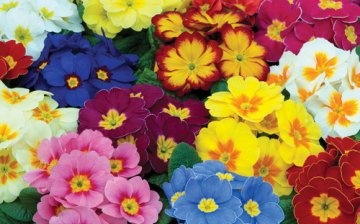Indoor primrose - growing and care
Indoor primrose first became popular in Western Europe, where it came from China, and then this plant fell in love with the inhabitants of Russia.
It is a primrose low perennial plant with pubescent, rough leaves on short petioles. A good primrose is that it has a fairly long flowering period to the delight of lovers of indoor plants.
A big plus of room primrose is the variety of colors of its flowers, collected in dense umbrella inflorescences.
In order for the indoor primrose to bloom longer and more abundantly, you must follow the rules for the care and cultivation of this plant.
- For a more lush flowering, primrose requires annual rejuvenation.
- Plants should be placed on shelves and windowsills with very good lighting. South windows will do, but provide shade for the plants during the hottest part of the day.
- In summer, primroses can be taken out of the room to the balcony or transported to the garden at their summer cottage.
- In summer, plants should be watered with moderate amounts of water, but regularly. Reduce watering during the winter months to keep the plants from rotting.
- Air humidity for room primrose is not critical, there is no need to spray the plants.
- Young primroses are transplanted every year, and adult outlets are transplanted into fresh soil every 2-3 years.
- The substrate for growing primroses should contain a mixture of turf, peat soil, compost and sand (3: 2: 1: 1).
- The primrose can be propagated, for example, with the help of lateral processes that form on the plants after the peduncles are removed. The shoots are cut in the spring, immediately planted in containers with earth and covered with jars, plastic bottles or plastic wrap. Rooting of cuttings is quite fast.




Oh, I tried to dilute the primrose 10 times for sure. She's so whimsical. Every year, before March 8, we sell already flowering plants for every taste. And I keep buying. But some time passes, the flowers fade and that's it - my plant dies.